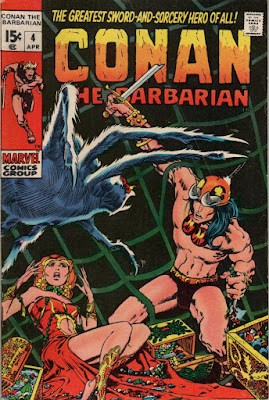The Tower of the Elephant (#4)

Analysis of Conan the Barbarian #4: The Tower of the Elephant This issue, adapted from Robert E. Howard’s original Conan short story, exemplifies several key themes central to Conan’s narrative and the sword-and-sorcery genre: the collision of barbarism and civilization, the hero's confrontation with the supernatural, and the pursuit of glory and riches. Below is a detailed breakdown of the text, analyzing its literary and thematic significance. 1. The Setting: The Thief City of Zamora The opening pages describe Arenjun as a decadent, chaotic city teeming with danger and vice, emblematic of the "civilization" that Conan both critiques and defies. The juxtaposition between the raucous revelry of the thieves’ den and the ethereal majesty of the Tower of the Elephant sets up a dichotomy of earthy human corruption versus lofty, otherworldly power. Imagery : The murky torches, shrill laughter, and gleaming tower contrast vividly, emphasizing Conan’s inevitable journey from ...





